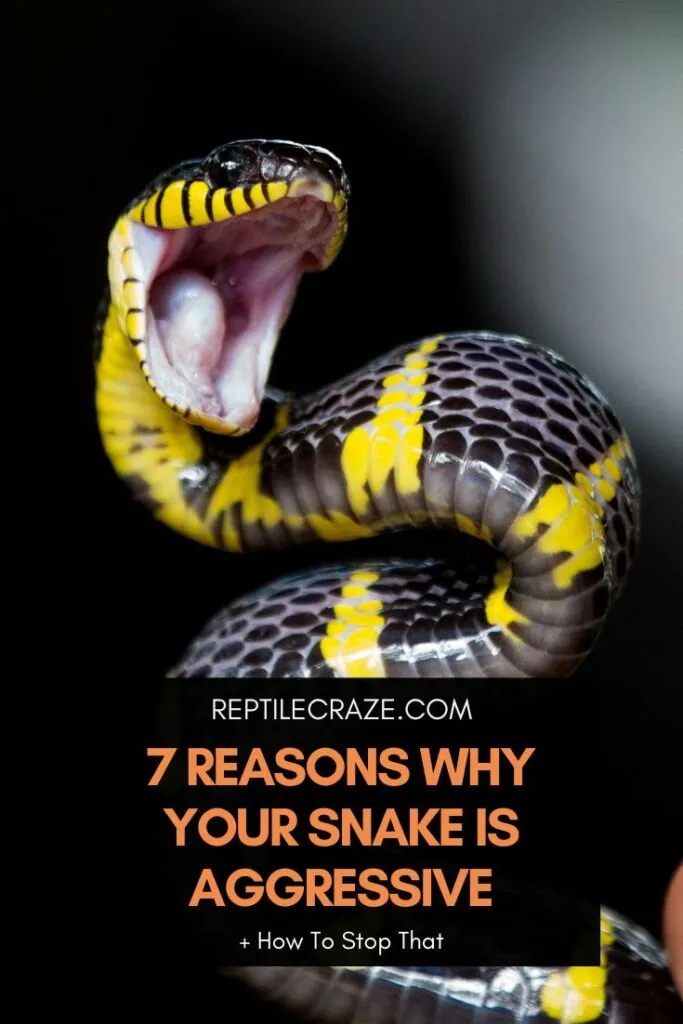
You are probably reading this right now as your once docile snake suddenly is hissing and puffing at you, or even striking at you. Is your snake’s reaction even aggression? Snake breeders have always said there are no aggressive snakes, only defensive ones. What is the principle behind this statement?
Snakes become defensive or aggressive when they feel threatened. It can also be due to shedding, illness, injury, enclosure issues, lack of socialization training, territorial nature, feeding response, or when it is in a new environment.
In this article, we are going to discuss the reasons why your snake is being aggressive. At the same time, we will talk about the ways how to calm down your snake. You might be surprised that the root of your snake’s aggressiveness stems from bad eating habits and many more. So read on!
Table of Contents
Is Your Snake Aggressive Or Defensive?
Before we get into the reasons for aggression and how to stop that, we need to explain the difference between aggression and defensiveness. Understanding this can immediately help you with your snake’s behavior problems.
Almost all snake breeders always claim that there are no aggressive snakes, just defensive ones.
When you watch breeders on Youtube, you cannot even believe what you are seeing as they just pull out one snake after the other without even getting a single bite.
There are also times that the snake hisses, puffs, and even strike at the breeder, but once they are held, they immediately calm down.
They will just have an attitude again when the breeder eggs them on with another finger directly moving rapidly in front of their faces.
What does this mean? It means that snakes react to stimuli in their environment. As snakes are common predators, their reaction to other potential predators (snake owners and breeders) is defensive.
They are not actually naturally aggressive, rather they react to a stimulus that is threatening to them.
Snakes are not sympathetic nor empathetic creatures so they cannot understand that the owner is just trying to feed them or handle them and that we mean them no harm. For snakes, it is either they are in relaxed or defensive mode.
In this study, it was noted that a lot of snakes result in fleeing as opposed to putting up a fight against a threat. It was only when the researcher tried to block the snakes from fleeing that they exhibited aggressive reactions.
This proves the point that snakes do not act aggressively for the heck of it. They are simply trying to defend themselves.
Imagine an enclosure where they cannot flee, they are simply stuck there. Therefore, they do not have a choice but to act defensively.
Snakes Have Unique Quirks
There are certain snakes that have quirks in relation to how they try to defend themselves. If you do not understand that this is just a characteristic of that specific snake, it is so easy to misconstrue this behavior as aggression.
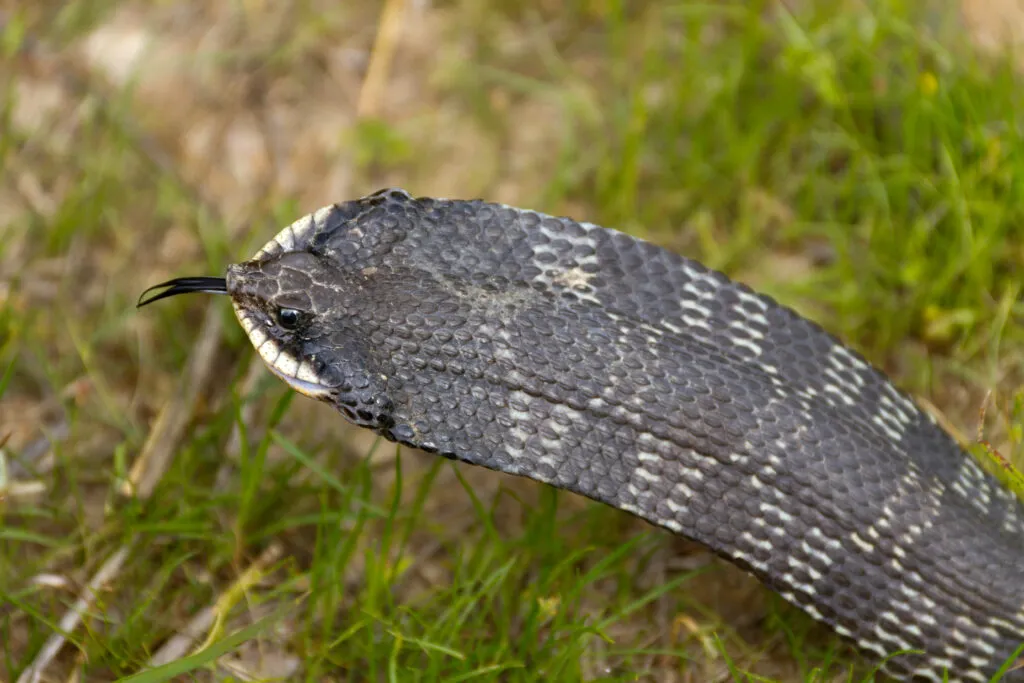
These defensive displays may scare you and hinder you from handling your snake, thus failing with handling training. Some examples are:
- Bull snakes hiss very loud and they mimic the rattle of the rattlesnake by rubbing their scales together.
- Garter snakes may seem like they strike at you, but they are simply musking you. This is when they release a foul-smelling liquid.
- Hognose snakes will make themselves larger by puffing up and flaring their cheeks, much like a King Cobra.
A lot of researchers have noted that it has a lot more to do with our inherent fear of snakes as humans compared to the snakes acting defensively.
Just like in this study, it was noted that conquering the fear of a snake and its defense mechanisms led to proper handling training and a less defensive snake.
Reasons For Snake Aggression
Now that we have established that the aggression of snakes is the consequence of their defense mechanism, we can now take a look at the reasons why they act like this.
1. Your Snake Is In Shed
In the days leading up to their shed, snakes enter the phase as what breeders call “in blue.” This is the time when their eyes turn into a murky bluish gray color. Their eyesight is much worse than it is during this time.
Therefore, they are more anxious than ever leading them to become more defensive. During this time, they may hiss at you or strike you when you abruptly open their enclosure or you try handling them.
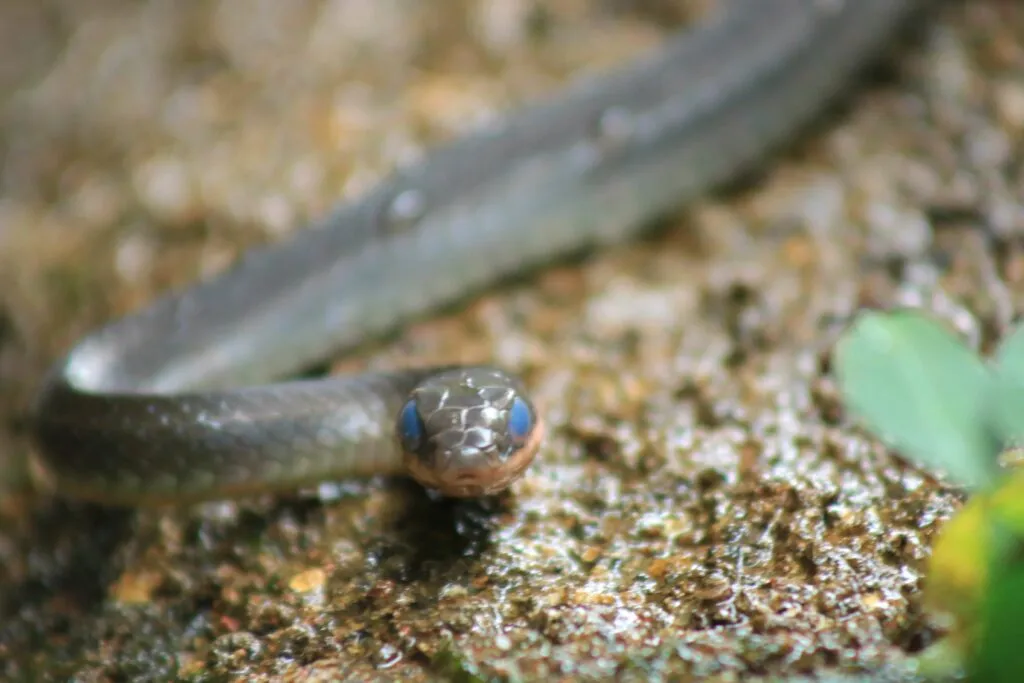
During shedding, there are bodily changes happening to your snake. This is an uncomfortable time for them. Some snakes even refuse food during this time, so they are both uncomfortable and hungry.
This is why it is not the best time to handle your snakes are they are already stressed. You can think of it as a raging teenager during puberty. They are moody due to bodily changes.
No worries, as your snake’s mood, will return to normal once it is done shedding. You can resume handling your snake once they are rid of its shed.
2. Your Snake Lacks Socialization
You simply cannot get a pet snake and leave them forever in its enclosure untouched. Even if you have a docile snakelet from the beginning, you will run into aggression problems in the future if you do not socialize with your snake.
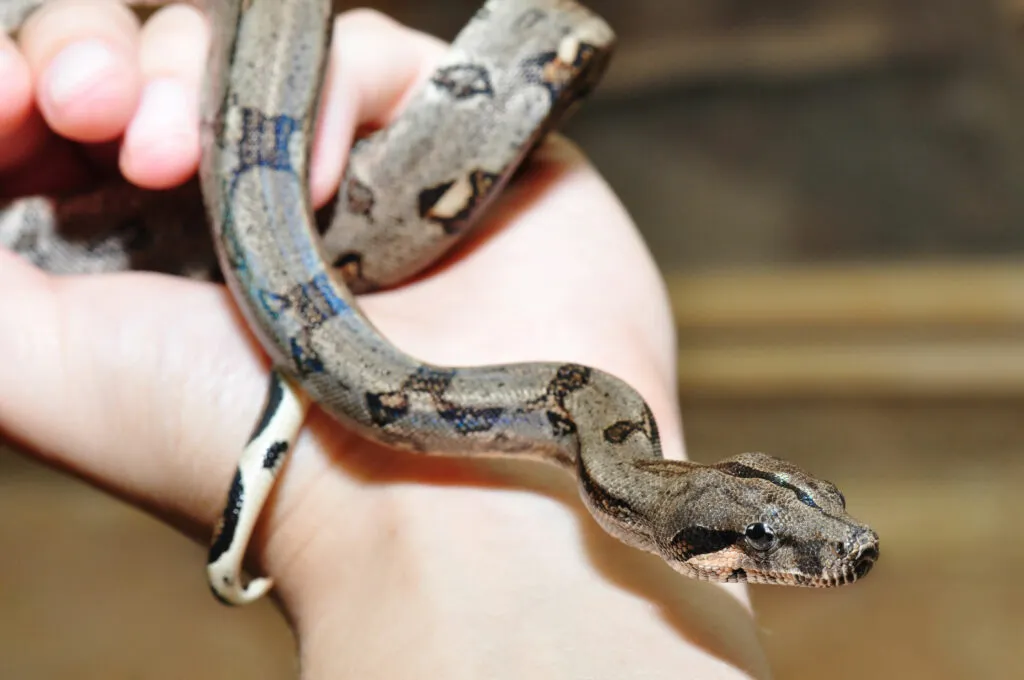
Snakes without handling training will become anxious and insecure. They can become possessive with their
As it was not established via handling that you mean them no harm, they will always be on high alert when you approach their enclosure or when you try to handle them.
3. There Are Issues With Your Snake’s Enclosure
The proper setup of the enclosure of your snake is as important as feeding them. This is why it is crucial to maintain the enclosure as if it was set up for the first time.
A drastic change in your snake’s enclosure can stress your snake and you will be in for a bite the next time you try to handle your snake. Here are some things in the enclosure that you should monitor:
- Substrate: Some snakes like to burrow while others like to lay on the substrate. There are specific snakes that require certain substrates like corn snakes that like to burrow so a good option is aspen shavings.
- Gradients in temperature: There should be a warm and cool area in the enclosure. You should always check that both areas retain the right temperatures.
- Humidity: Check if your humidity box in the enclosure is appropriate to the size of your snake. You should also make sure that the humidity level of the enclosure is just right.
- Size: Even if you have a relatively small snake, it will still grow in size and length as it ages. Make sure that the size of your enclosure accommodates your snake with enough room to explore.
- Location: The place where you put your snake enclosure should be away from too much noise and activity or it will stress your snake.
- Enrichment: Is your snake arboreal? Does it like to hide? There should be certain objects in the enclosure that play to the natural behavior of your snake.
4. Your Snake Has An Illness Or Injury
It is only natural for your snake to be in a bad mood and try to nip you when they are feeling unwell. Therefore, if your snake suddenly acts aggressively when you try to handle or feed them, there might be another underlying issue.
It is time to check your snake if it has an illness or injury. Here are the most common ones:
- Your snake accidentally ingested substrate. In the process of feeding, snakes may also ingest substrate that may cause impaction.
- Your female snake has an egg impaction. You need to go to the vet to have these eggs removed.
- They have stuck shed or they are shedding too much. You can check this article to see what is causing your snake to shed too much.
- Check for open wounds and loose and damaged scales.
- If your snake has eye discharge, it can be an eye injury, cataracts, or even an infestation of mites.
- Observe the breathing of your snake, is it ragged? is it short of breath? Does it sound wet? Problems with breathing can be caused by parasites or infections.
The biggest sign that there is something wrong with your snake is that it becomes skinny. You can take a look at this article to know the cause of the sudden loss of weight of your snake as well as how you can bulk up your snake.
5. Your Snake Is Territorial
Snakes in general are territorial. This is the reason why it is the rule of thumb to house just one snake in an enclosure. There are some snakes, that you can house together, like the garter snake, but most snakes will fight or even eat their
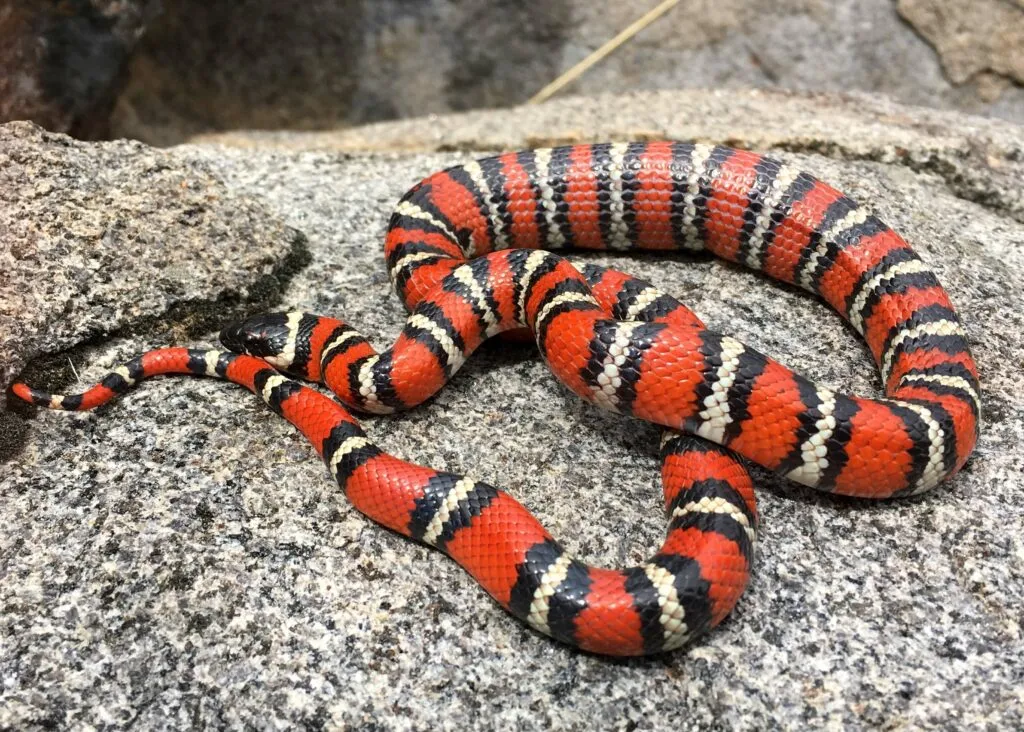
The only option to curb your snake’s territorial behavior is for it to get used to handling. In this way, you can minimize the instances where your snake will strike at you every time you open its enclosure.
Some nips, bites, and musking are expected especially when your snake has a high territorial response. But as they get used to you handling them, spot cleaning the enclosure, adjusting the hide, or feeding them, they will eventually minimize their territorial response.
6. Your Snakes Has An Automatic Feeding Response
Snakes can be over-eager when it comes to feeding time. It is easy for a snake to associate its environment based on its current experience.
Therefore, if you feed your snake inside its enclosure without pairing it with handling training, your snake will think that whenever you approach or open the enclosure, it is time to feed.
This is also the reason why some snakes will try to strike at you or jump out of their enclosure when you open it.
It is not that they want to bite you, they are simply excited to feed, even though you did not mean to feed them. Another thing to take note of is that you might probably be triggering your snake’s feeding response.

This can happen when your hand smells like
This is also the same with handling another snake. You should wash your hands first to rid of the smell so that the next snake that you will handle will not smell the other snake.
7. Your Snake Is Adjusting To A New Environment
If you just moved in your new snake to its enclosure, your snake is more anxious than ever, any pet would be! Your snake does not understand that it is safe inside his new place, even if you provided it with a hide.
During this time, your snake will definitely display defensive behaviors as it is still adjusting to its new environment. Just give your snake some time to get used to its enclosure before you start handling training.
We do not want to add to the stress of your snake while it is getting a feel of its new environment. Handling your snake prematurely when it is already stressed may not prove to be effective handling training.
It will be difficult to calm down your snake when you handle it during this time.
How To Calm Down An Aggressive Snake
There is no special technique to calm down an already defensive snake. The only solution is for it to get used to handling. You should conquer your fear of being bitten as it is inevitable in handling training.
Also, you cannot expect an anxious or overly defensive snake to calm down in an instant. You have to brace yourself for the arduous and consistent training ahead.
It can take up to three weeks of handling training to at least keep your snake at ease when you open its enclosure.
Important note: This does not apply to snakes that can kill you with a single bite. Highly venomous and toxic snakes should never be handled even if they are legal pets.
Snake Handling Training
There is this thing that breeders call the “confident grab.” This is when you handle your snake even if it is hissing, trying to bite you, or striking at you.
This is done in order to desensitize the snake with touch and to establish that you do not mean it harm. Of course, some snakes will definitely bite your hand but they will eventually calm down as you hold them and move your hand according to their movement.
Tools can be used for you to build your confidence in handling your snake. These can protect you from bites.
- Gloves (wear thicker gloves for larger snakes)
- Snake hook (perfect to use when taking out a snake that strikes at you when opening the enclosure)
- Sweater or jacket (to protect your arms)
Once your snake is settled in its enclosure, you should begin handling training. You should handle your snake for 15 minutes twice a day. All you have to do is to hold it and stroke it.
Snake Feeding Habits
As we have mentioned earlier, snakes can sometimes become aggressive as they are in
It is a controversial subject when we talk about feeding your snake inside an enclosure versus feeding it in a designated area. The biggest disadvantage of feeding your snake inside its enclosure is that it associates “eating” whenever you open its enclosure.
Therefore, if you choose to do it this way, you should pair it with handling training. Besides opening the enclosure to feed your snake, you should also handle it at a different time.
When it comes to feeding your snake in a designated bin, it can be disadvantageous also as moving your snake to and from its enclosure can stress the snake. However, this can teach your snake to not be too territorial whenever you open its enclosure.
There are pros and cons with both options, but choose what works for your snake the best. It is a better option to have a
What is important is that the snake is not too stressed that it regurgitates its
Why Is My Snake Aggressive After Feeding?
There are two reasons why your snake is aggressive after feeding. The first reason is your snake is probably still hungry. As your snake grows, you should also adjust the size of its
At the same time, when they are nearing their shed, they tend to have bigger appetites.
The second reason is it is a natural response. When your snake is eating and digesting its
At the same time, when your snake just had a full meal and currently digesting, it affects how they move so their instincts tell them that they are vulnerable and open to predation.
Therefore, when you disturb them while they just finished eating, they will become defensive.
The most important thing to remember is to never disturb or handle your snake after feeding it. This does not only stress your snake but also disregards all your progress during handling training as your snake feels threatened by you, yet again.
Why Does My Snake Have Cage Aggression?
Snakes do not usually become defensive or aggressive when left inside their enclosures. Therefore, if your snake has cage aggression, it is likely that your snake has a problem or there are enclosure issues.
Here are the possible reasons:
- Your snake is about to shed. The times leading to their shed can make them uncomfortable thus they are more irritable and anxious.
- They are preparing to go into brumation. If this is the case, you should adjust the temperature of the enclosure or move your snake to a cooler area.
- Your snake is hungry. You might need to adjust its feeding schedule or increase the size of its
food . - Your snake suffers from an automatic
food response. Whenever there is activity outside the enclosure, your snake may think that it is for it to eat. - Your snake has an illness or injury
If there is completely nothing wrong with your snake, yet it suffers from cage aggression, then the only solution is again, handling training.
Use the necessary tools to protect yourself from bites when you are going to handle a snake with cage aggression as it will bite you every chance it gets.
Least To Most Defensive Snakes
| Snake | Temperament |
| Corn Snake | Naturally docile. Babies are feisty but can calm down through handling. |
| California King Snake | Docile especially when raised in captivity. Babies are nippy but calm down with handling. |
| Ball Python | Shy snakes that curve into a ball when threatened. Fast response to handling. No handling during the evening as it may bite due to its nocturnal nature. |
| Rosy Boa | Quickly responds to handling. It is easy to correct its automatic |
| Milk Snake | Not prone to biting but very anxious. A bit difficult to handle as they are agile. Can calm down once they get used to handling. |
| Bull Snake | Naturally defensive but can become docile with handling. They have big decency to have an automatic |
| Garter Snake | Docile but agile which makes it difficult to handle. Loves to musk their owners but do not resort to biting. |
| Hognose Snake | Docile but defensive. Difficult to handle as they are prone to stress. Babies are known to strike, but they do not bite. |
| Coral Snake | Shy and anxious snake that will bite when it feels cornered. Difficult to handle as it resorts to biting, multiple bites can also be toxic. |
| False Water Cobra | Does not like to be held and will not hesitate to bite. It can calm down when it gets used to handling. |
| Rainbow Bow | Has an automatic |
| Green Tree Python | Extremely defensive and biting is its first response. Does not respond well to handling. Babies are extremely defensive, but handling training is possible when you start handling them as babies. |
| Reticulated Python | Extremely |
Conclusion
Even the most defensive snake can be calmed down with proper and consistent handling training. Keep in mind that aggression in snakes is not inherent, rather it is just a defensive response.
Canceling out their automatic
Be ready for nips and bites as these are inevitable, but also use protective gear so you can feel more confident in handling your snake.
- Enchi Ball Python: A Unique and Stunning Morph of Python regius - March 27, 2025
- Emerald Tree Monitor: The Enigmatic Green Guardian of the Rainforest - March 26, 2025
- The Egyptian Cobra (Naja haje): A Fascinating Serpent - March 25, 2025
